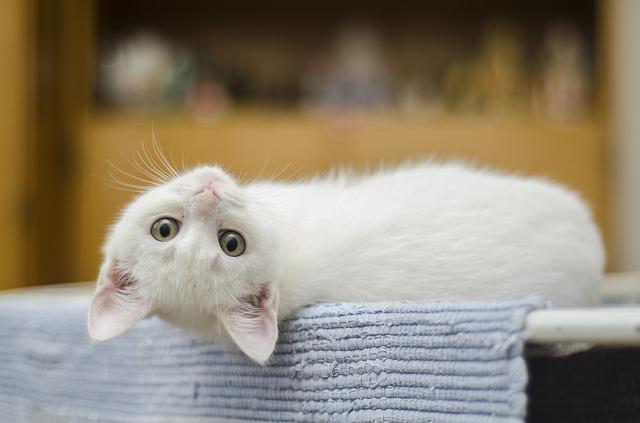
Why do Cats Roll on Their Backs?
There are many essential behavioral characteristics possessed by cats, one of which is rolling. It is very important to note that when a cat rolls, it practically tells a lot about their interaction with humans as well as their surroundings.
Creating Human-Feline Bond
Seeking attention is one of the key characteristics that can get your cat rolling on its back. If your cat flips on your feet or in front of you it is a clear indication that it needs some attention. Anytime your cat exhibits such behavior of rolling on your feet, top of its back, or the floor it really means that quality time should be spent with the cat.
Giving a positive response to your cat’s behavior pays by creating an organized relationship between you and the cat. Cats are always familiar with a continuous routine, so once your cat becomes comfortable with the established pattern, it becomes a routine.
Security and Comfort
It is also interesting to note that when cats roll it means that they are much more secure with you around them, a cat will never roll on its back in your presence unless they feel very much comfortable, safe, and secure. If your cats roll in front of you, it shows that the cat trusts you well enough to be around you, and it shows a very great sense of security which helps in increasing the opportunity for both of you to bond.
Mating
Mating is one of the essential behaviors that makes a cat roll on its back, specifically female cats will roll and rub their bodies on things when they are in heat. This simple act automatically sends a signal to the male cat that the sexual hormone of the female cat is fully active for mating. After mating, the queen [female cat] tends to quickly roll on the floor in order to clean the part of her body that was touched by the male cat.
Marking Territory
Cats are also responsible for marking territory by rolling on the ground. This whole process is done when a cat emits a scent that helps the cat keep away from other cats as well as possible enemies, so when the cat wants to protect its territory they do it by rubbing its whole body on the floor in other to induce a smell that will deter other felines from crossing its territorial zone.
It is best to note that for a cat to roll on the floor, your feet, or on something else there is always a behavioral response either to a human being or its surrounding.
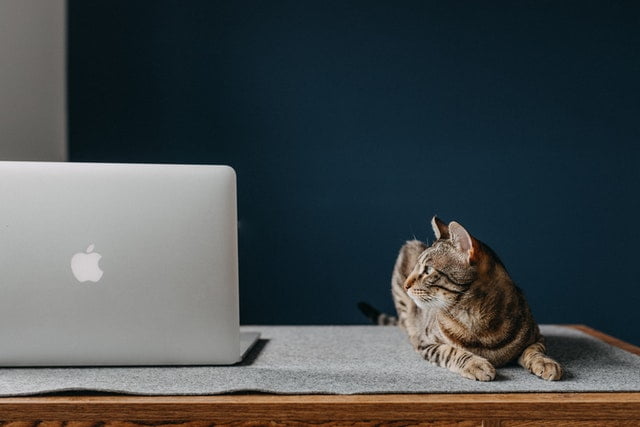
Wonderful News about FIP Treatment
FIP was once considered fatal to cats. However, as the following article explains, there is a new treatment that has actually cured cats! This is wonderful news. Please read on, and thank you for your support.
In January 2021, Patty, one of my three Feral Fixers foster kittens, was diagnosed with wet/effusive FIP. It was devastating news since I had lost four out of five of one of my litters to FIP a few years prior and everything I’d ever read when researching it had said it was fatal. Patty’s belly was huge and I could feel every bone in her spine and hips. I had been syringe-feeding her at the time of the diagnosis since, once I noticed a big belly, I separated her from her sisters to monitor her food intake and noticed she wasn’t eating on her own. But once we got the official diagnosis, I was heartbroken. All I pictured was watching her deteriorate each day with an inevitable fate of death. I couldn’t bear it and Tammy didn’t want me to have to go through that either so we scheduled a euthanasia appointment for a couple of days later.
When I was holding Patty in my arms the night before her appointment, something was telling me that it wasn’t her time to go yet and I was drawn to my computer. I started Googling and researching and I can’t even remember what I was entering into the search bar but somehow I found out about a Facebook group called FIP Fighters. They were helping to clinically cure cats of FIP through a treatment called GS-441524. I answered the few questions required to join and waited to be accepted into the group.
The next morning, I had a message from one of the Administrators in my Facebook Messenger app. He told me about the three brands of treatment their group recommended, the dosages, the cost, and the frequent bloodwork required during treatment. I emailed Tammy and asked to cancel Patty’s euthanasia appointment and see if she’d approve of me trying this treatment if I bought the meds and Feral Fixers paid for the supplies, supplements, and monthly bloodwork. She said she was willing to give it a shot! Yes, we were putting our trust in this unknown drug from China, which was not approved for use by veterinarians in the U.S., but we really had nothing to lose.
I ordered the cheapest of the three medicines, gathered the required needles and syringes, and watched videos on how to give an injection. I also scoured through the FIP Fighters Facebook group, looking for posts with tips on how to give injections and helpful supplements to give during treatment, etc. I was terrified and dreading that first needle poke, knowing that I had so many more to go after that one.
The protocol for treatment is 84 days of injections, administered at the same time every day, with monthly bloodwork to see if improvements are being made, followed by 84 days of observation. If there is no relapse during the observation period, the cat is considered “clinically cured” of FIP.
I was about to venture into a six-month commitment to try to cure Patty but I was ready. I focused on the success stories shared by fellow FIP Fighters. I became obsessed with the Facebook group, tears constantly running down my cheeks as I read posts throughout the day. Sometimes tears of hope and joy when someone shared a success story and sometimes tears of sadness when someone shared their loss.
But the very special thing about this Facebook group was that everyone was so supportive and helpful. That, alone, inspired me since it is so hard to find these days. And it was an international group. I really felt like I had found “my people.” I was determined that Patty would be a success story and we could share her journey with others and let people know there IS hope after a FIP diagnosis.
After two weeks of injections, Patty’s distended belly had finally noticeably subsided and she was eating on her own. I syringe-fed her for quite a while, even supplemented her with it once she started eating little bits of food. Each day, I also gave her Pet-Tinic for her anemia, an injection of B12, and a milk thistle for liver support since GS-441524 is hard on the liver. (The Administrators of the Facebook group recommend liver support in conjunction with the treatment.) I shared each bloodwork report with my Admin to get his comments/suggestions.
Patty finished her 84 days of injections in April and was given clearance to enter the observation period. She finished her 84 days of observation in July without any incident of relapse and is now considered “clinically cured.” She took the injections like a champ and I am so proud of her. I’ve read many stories about cats who would really fight them so I felt very fortunate to have such a good
patient. And a positive side effect of this whole experience is that I felt proud of myself and became more confident in my capabilities to treat cats in the future.
Special thanks to Erika Vezza, author of this article, and Feral Fixers for permission to post this wonderful story. Visit FeralFixers.org to learn more about this great cat rescue organization.

Why are cats so susceptible to kidney disease?
Cats are particularly prone to kidney damage and it has a variety of causes. Infections, cancers, exposure to toxins, and malfunction of the immune system may all be responsible for starting a slow process of damage, leading eventually to loss of function and kidney failure. The original cause is often no longer present at the time of diagnosis and sometimes will never be discovered.
The body has more kidney tissue than it needs, so much may be lost before symptoms develop – and before blood tests show changes. This slow progressive process is referred to as “chronic” kidney disease. Occasionally, previously healthy kidneys suffer sudden and massive damage (acute kidney disease) but this is less common.
What do the kidneys do?
Kidneys filter the blood and take out poisonous by-products produced by the workings of the body. These are added to water to form urine.
They also get rid of excess water into urine or, when water is lacking, can concentrate urine to reduce water loss. When they are diseased, the ability to concentrate urine is lost and the animal has to drink more to get rid of the body’s waste products.
The kidney regulates the number of various salts (sodium and potassium, among others) within the body by moving smaller or larger amounts into the urine. Kidney disease may cause some of these to build up within the circulation making the animal ill and perpetuating the kidney damage.
Other functions of the kidney include the production of chemicals called hormones. One hormone causes the blood vessels to expand or contract – lowering or increasing the blood pressure. Another hormone stimulates the body to make red blood cells so, when the kidney’s hormone production is out of balance, this can sometimes cause anemia.
How is kidney disease diagnosed?
Diagnosis is reached by a combination of blood and urine tests. An increase in the toxic substances that the kidney normally removes can be measured in the bloodstream. Looking at the concentration of the urine is also helpful.
In kidney disease, urine is diluted and more prone to infection – which can be detected by tests. In some cases, the only way of finding the cause of the disease is by biopsy (removing a piece of kidney for examination).
This involves an operation, therefore, it is often not done unless there is a chance that a definitive diagnosis could help in the treatment of your cat. In many cases, the damage – which causes the symptoms – cannot be reversed.
What are the symptoms?
Everyone knows that in an animal, drinking lots of water can be a sign of kidney disease, but this can also be a symptom of other illnesses.
Cats are discreet and maybe secret drinkers, so early signs of excess thirst may be missed and they may become quite ill before treatment is sought.
As kidney disease advances, other symptoms include weight loss, signs of dehydration, poor appetite, smelly breath, a sore mouth, vomiting and weakness. Eventually, there may be twitchiness or even fits. However, these symptoms are common to many illnesses, not just kidney disease.
What is the treatment?
There is no cure. Treatment aims to minimize the symptoms, by reducing toxin production, keeping salt levels normal, and slowing the rate of ongoing damage.
Cats that are unwell and severely dehydrated may benefit from intravenous fluids to re-hydrate and flush out toxins. If improvement does not follow, then kidney damage may be severe, and you should consider the options carefully with your vet. Home nursing is very important.
The toxins produce nausea, loss of appetite, and sometimes mouth and stomach ulcers. Tempting food, such as fresh fish or chicken, warmed and given by hand may help. If loss of appetite is long-term, your cat’s quality of life becomes questionable and should be discussed with your vet.
How long will my cat live?
This varies, depending on the severity of the disease, the underlying cause, and the speed at which ongoing kidney damage is occurring – something which only time will reveal.
The most important consideration is the well-being and happiness of the patient. Some cats, although thin and drinking lots, stay reasonably well for one to two years or more. Others can be unwell and deteriorate rapidly within weeks.
Long-term treatment
Free access to water is essential, especially in the summer. If the cat is accidentally shut in without water, dehydration and toxin build-up can happen rapidly.
Encourage your cat to drink by placing water bowls in several rooms. Cats prefer dog size bowls, which should be filled to the brim and placed away from feeding places.
Some cats prefer running water so consider getting a water fountain. Many of the toxins come from dietary protein, and there is increasing evidence that low protein diets improve general condition and longevity. Cats can be very reluctant to try new foods, so try to start dietary change at initial diagnosis, when the cat’s appetite may be better. Be prepared to mix new and old diets together for one to two weeks.
Warming food may help. However, with a cat that absolutely refuses to eat the diet, maintaining a healthy appetite becomes more important than eating a special diet.
You need to discuss what is best for your animal with your vet. Anabolic steroids may be given in an attempt to improve appetite and reduce weight loss.
Other drugs, which are sometimes used, include ACE inhibitors. They may preserve function in undamaged parts of the kidney, while anti-nausea drugs, appetite stimulants, and anti-ulcer drugs may improve appetite.
Excessive potassium loss due to failing kidneys may lead to weakness, therefore potassium powder or tablets may be prescribed.
Phosphates may build up in the circulation of patients with kidney problems, worsening the kidney damage, so your vet may prescribe medicine to reduce your cat’s intake of phosphates, especially if your cat is not eating a special low protein diet.
A blood pressure check may be suggested. High blood pressure worsens kidney damage and unfortunately, kidney disease can cause high blood pressure – working in a vicious circle. In advanced cases of anemia, there are treatments to stimulate red blood cell production, but these are expensive, only work short-term, and are not suitable in all cases.
Your vet will discuss with you what is best for your cat. In summary, kidney disease cannot be cured, but there are treatments that may make your pet feel better.

International Cat Day: three dates dedicated to these wonderful beings
In case you don’t know, every year 3 events are held dedicated to these wonderful animals that make our lives happy every day.
Do you want to know why there are 3 annual dates dedicated to felines?
I would tell you that they deserve this and more and that for me, every day is International Cat Day. And I go even further, I would like all this popularity to be translated into spreading messages of adoption and responsible ownership of these extraordinary beings with whom we have the privilege of sharing the planet.
The love for cats is celebrated every February 20, but it also has a place on August 8 and October 29. Next, I will tell you what these dates are due to.
Why is International Cat Day commemorated on February 20?
This feline date takes place every year, on February 20, and its origin is quite peculiar and is linked to one of the most popular American presidents.
The reason for celebrating International Cat Day is due to Socks, the furry companion of the Clinton family (yes, those people who lived in Casablanca between 1993 and 2001 during the US presidency)

Socks was adopted by the president’s daughter in 1991 and over time gained the attention and affection of Americans. And it was not surprising, he was gorgeous, had a black and white fur print, and seeing him on the lectern in the press room was quite a sensation.
This cat was an important member of the family and the media photographs of the cat with Bill on his shoulder, playing in the garden, running around offices, and even appearing in Christmas images in front of the tree were very common.
A few years later, Socks was diagnosed with cancer and after some time trying various treatments without success, they made the decision to end his suffering on February 20, 2009.
After his death, users on social networks echoed the sad news and declared February 20 as International Cat Day to remember Socks.
International Cat Day: celebration August 8
The second date dedicated to these incredible animals is August 8. It is also considered International Cat Day, but in this case, its origin is due to the International Fund for Animal Welfare (IFAW: International Fund for Animal Welfare), the organization that decided to dedicate a day specifically to them in 2002.

Do you know why it is precisely on this date?
Do you know why it is precisely on this date? The reason is that in the northern hemisphere it is the time of year when felines are most likely to be in heat.
The reason for this commemoration is to remember that although cats are incredible companions for life, it is vital that we be responsible and aware of the care and attention they require.
This day is the perfect excuse to get to know the felines even better and therefore the IFAW usually makes recommendations in this regard to shedding light on the nature of these animals.
International Cat Day: celebration October 29
And since there are not two without three, here is the third date dedicated to the kittens. The celebration of this International Cat Day on October 29, is due to a woman named Colleen Paige, an expert in feline behavior.
Colleen’s goal was to make people aware of the terrible situation cats live in, especially those who live in the streets.
This day serves as a pretext to speak out loud about the consequences of abandonment and its goal is to promote adoption.
And if you’ve made it this far, I leave you five posts for you to take loving care of your furry companion:
- Living With an Older Cat
- The First Day of a New Kitty at Home
- No More Cat Spraying
- Felines Vs Canines – Battle of the Pets
- Feline Hyperesthesia Syndrome
Can you give me a leg and spread it on Facebook, Twitter, and Instagram?
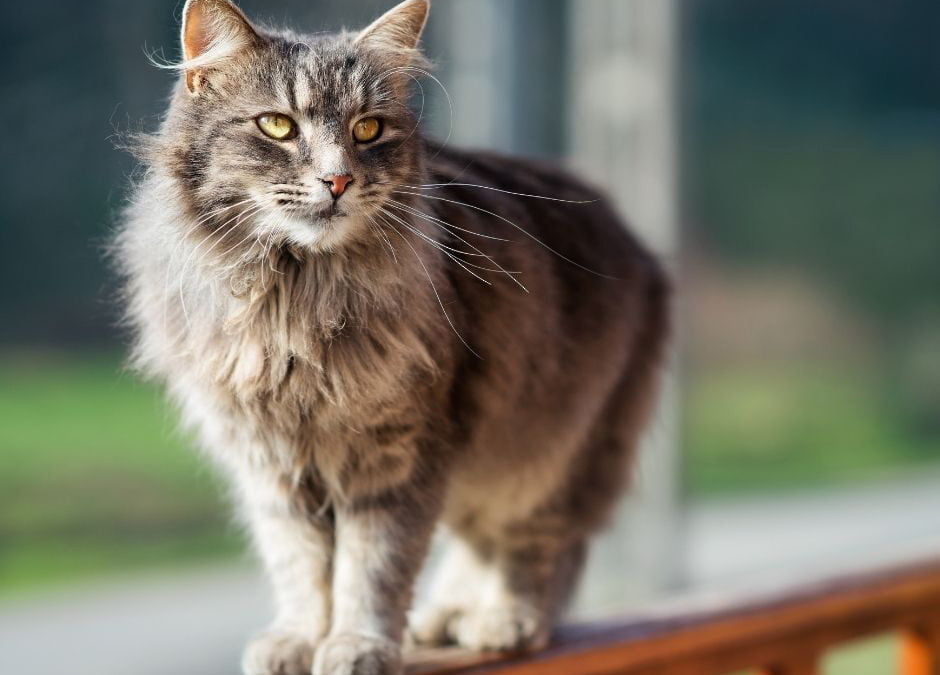
Feline Hyperesthesia Syndrome
Do you notice an obsessive cleaning of your cat? Do you notice biting and/or do you notice tremors in the back? Do you think your cat has a skin problem or perhaps the spine?
Perhaps it could be due to Feline Hyperesthesia Syndrom or Rolling Skin Syndrom.
What is it?
Hyperesthesia means abnormally increased sensitivity of the skin. It is a rare disease seen in nervous or highly stressed cats. It affects cats of any breed and age. It is not lethal and has no cure.
Read: How much do Cats Sleep? Learn all about Cat’s Sleeping Habits
If your cat suffers from this syndrome, it could show excessive sensitivity when touching any point of the spine, chasing its tail, biting itself, running, jumping … It can also choose to chase things that are not present and have very dilated pupils. They could even get injured by excessive licking/biting and pulling their hair trying to alleviate their discomfort.
What produces it?
The cause is unknown, mainly associated with stress, obsessive-compulsive disorder, or even many authors associate it with a type of feline epilepsy. Hyperesthesia syndrome could be triggered by problems with electrical activities that occur in the brain and are responsible for controlling predatory behavior, grooming, and emotions.
Must Read: How To Remove Cat Urine Smell From Fabric
An interesting fact is that cats that suffer from it have been shown to have injuries to the muscles of the spine, which either cause or contribute to causing discomfort in the spine.
Signs
 During the episodes, muscle spasms occur in the back, and ripples from the shoulder to the tail, rapid and aggressive movement of the tail, dilated pupils can be observed.
During the episodes, muscle spasms occur in the back, and ripples from the shoulder to the tail, rapid and aggressive movement of the tail, dilated pupils can be observed.
These seizures last from seconds to a few minutes and then they run off as if something scares or is chasing them. Some specimens may have seizures during or after the attack.
In some cats it can be easily noticed but in others it is difficult to detect. A lot of attention must be paid to carry out an early diagnosis and, at this point, the role of the owner is fundamental: animals that feel that something is “attacking” their back and, consequently, lick excessively and / or bite and pull their hair from the area they are susceptible to suffering from feline hyperesthesia.
How do we diagnose it?
The diagnosis is obtained by ruling out other conditions and diseases that cause similar symptoms and behaviors: parasites, dermatological problems, musculoskeletal pain…. Once discarded, we can reach the diagnosis of feline hyperesthesia.
First of all, a behavioral history should be taken, the animal examined well. In addition, we must perform a battery of general complementary tests: blood count, biochemistry, and thyroid hormone analysis. On the other hand, investigate if you can suffer from flea bite allergy dermatitis, since in animals with severe joy it can cause itching and irritation of the skin, licking/biting / scratching aggressively and causing injuries to it. It is also important to rule out skin problems, sometimes excessively dry skin can cause itching and ensure the absence of diseases that cause pain in the spine, muscles, or joints, such as trauma, abscesses, anal sac problems, organ damage, tumors.
Treatment is based on reducing stress and changing environmental patterns. In the last case, it can be tried with medical treatment to reduce anxiety, corticosteroids and VNA treatment.
Guidelines for reducing stress.
- Hormone diffusers, such as Feliway, are recommended at various points in the house. Its use should be prolonged 24 hours a day.
- It is recommended to leave the TV or radio on when leaving the house, even some light if it is at night so that you do not feel alone.
- Try to make time every day, at least 5-10 minutes, 3 times a day to play with your cat, with interactive toys, lights …, and change the toys so that he does not get bored with it.

- It is important that you have a scratching area at various points in the house since scratching helps relieve stress. One trick: Catnip Spray can be used to induce scratching in these places.
- If there is more than one cat in the house, you have to separate the areas for each animal: each one must have individual feeders, drinkers, litter boxes, and rest areas in different areas. Above all, it is important to have more than one item per animal, especially litter boxes and feeding containers.
- Provide elevated areas for observation and rest (stairs, raised platforms, high scrapers, shelves …).
- Encourage foraging behavior: preferably wet food as it has more odor and more water. It can hide in certain objects or corners of the house, to stimulate the tracking behavior.
- Use of agglomerating or normal sands without aromas.
- Avoid excessive manipulation, it must be the cat who decides the degree of contact he wants to have with the owners.
- VERY IMPORTANT TO MAINTAIN YOUR DAILY ROUTINE: Always feed him at the same time, freshwater changed daily. Daily cleaning of the sandbox.
If you notice an episode is starting, divert their attention. Throwing a toy at him,
stroking him on another part of the body, offering him a snack of food … any of these suggestions can help slow the process.

If Your Cat Gets Too Hot, Do This
Summer is here and it’s HOT outside! Air conditioners are going out left and right because they are overworking themselves in this heat.
We know what to do to cool ourselves off if need be, but if your cat gets too hot it can be dangerous.
Cats can overheat too. Some signs that your cat may be too hot are panting, restlessness, vocalizing, rapid heartbeat, and lethargy. If your kitty is exposed to extreme heat, here are some tips on how to help her cool down.
Read Also: How To Remove Cat Urine Smell From Fabric
What To Do If Your Cat Gets Too Hot
1. Put ice in the water bowl. While room temperature water is best for both people and cats, if your cat’s home is too hot then the water
most likely is as well. Adding ice to the water will help cool it down and encourage your kitty to hydrate during extreme heat situations.
Hydration is very important, so ice in the water is important. If you have outdoor cats, be sure to put the water dish in the shade, so as
to keep the water cooler longer.
2. Make dark cooler spaces for your cats to go to around the house. If you can put a box in the closet or a dark place in the house, this will
be a cool, safe escape for your kitty to go to for peaceful rest. A blue towel or blanket also encourages cooling temperatures according
to color therapy.
3. Wrap frozen items in a towel and place them near where your cat sleeps. This is especially helpful for those without air conditioning. In fact,
it’s the old-school air conditioning style for those of us who didn’t have AC growing up. Freezing water bottles work great for this, as
they stay frozen for quite some time.
4. Use a cool damp cloth and wipe down your kitty if he’s too hot. This is actually a great tip for you too. A cool damp cloth can feel like air
conditioning, especially if you have a fan running.
During the summer months, we want to do the best we can at keeping our cats comfortable. Even though kitties prefer a warmer
temperature than most humans, they too can get too hot sometimes. Following the above steps will help ensure a happier and healthier
cat!
See: The 5 Best Cat Fountains in 2021
Source: Twocrazycatladies
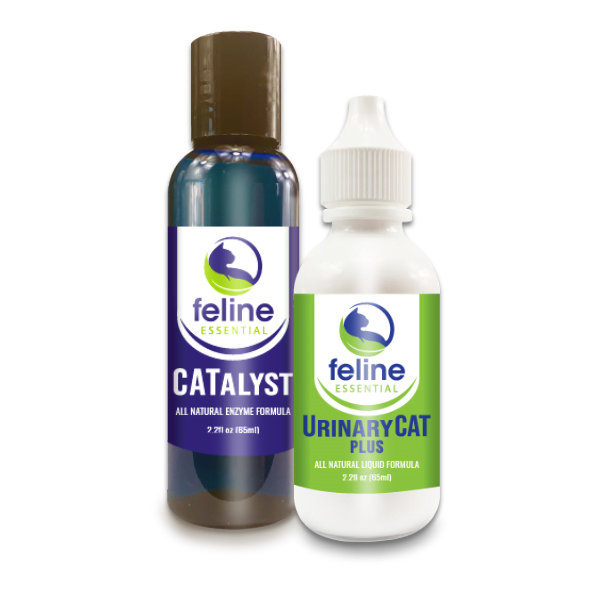
How To Remove Cat Urine Smell From Fabric
If you’re a cat parent you’ve probably experienced your cat doing the nasty deed of “going” outside the box. Over the years of working
with pets, I have met many people with cats urinating on towels or dirty laundry. Another one of the popular places for cats to “go” is on
the rug in front of your shower. The nice thing is (if there is a nice thing to this scenario) these can be thrown in the washer to eliminate
the cat urine smell.
Get Rid Of The Cat Urine Smell
But what if your kitty decides to go on the couch cushion, sprays on the side of a chair, or goes in the middle of your carpet? No worries,
we’re here for you. If your cat pees on something that you can’t just throw into the washer, we have a few simple steps to resolve this
issue.
- For fabric, while the area is still wet try to absorb as much of the pee as you can.
- Re-soak the area with water and again absorb as much moisture as possible.
- Apply an enzymatic cleaner to the area allowing it to soak in and completely dry to fully remove the smell
So don’t worry if your home is smelling like cat pee right now. With these simple steps, you can get that smell out and have a fresh home
again in no time. Remember, if your cat is peeing outside the box the first thing we want to do is get them checked by a vet. Inappropriate elimination is
often your furry friend trying to tell you something is not right.
Six Top Recommended Cat Foods for your pet today
If this is a behavioral issue and not a medical issue, please click here to find helpful ways to get your kitties going back in the box!
RECOMMENDED PRODUCT FOR CAT URINARY ISSUES
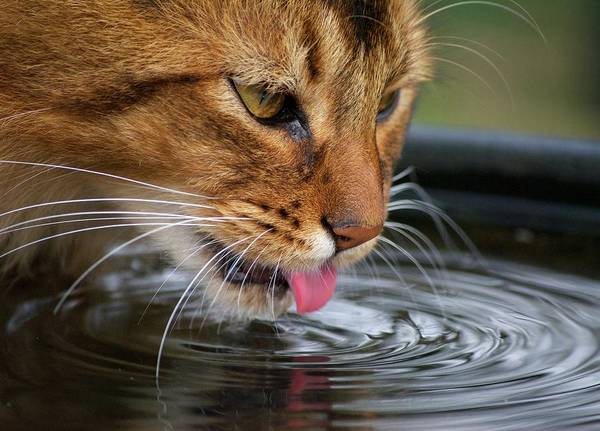
The 5 Best Cat Fountains in 2021
A cat water fountain is a motorized pump that circulates water via a series of filters (or a single filter). It pushes the water up into a fountain stream or bubbler. This system of water movement helps to keep it clean, cool, and aerated – providing water that tastes fresher and better to your feline buddy.
Why should you get a cat fountain?
Your cat needs to drink more water every day, especially if they are on a dry food diet. A cat fountain is one great way to ensure your cat stays hydrated all day long. Cats, as it has been discovered, are naturally attracted to trickling or running water. Hence, a water fountain is a good investment to encourage a good drinking habit for your cat.
Adequate hydration will consequently improve nutrient absorption, enhance better digestion, and assist to flush out bacteria and toxins that can accumulate in your cat’s digestive and urinary tract. Has your cat ever suffered a urinary tract infection in the past? Then you should get her a cat fountain to avoid future infections.
Bonus pro: Are you tired of your cat going to drink from the toilet or sink all time? A cat water fountain is also an effective solution to encourage your cat to hydrate from their water bowl instead of the toilet bowl.
How often should you change the water in your cat’s fountain?
Your cat fountain should be cleaned every 3 – 4 days for several cats and about 5 – 6 days for just one cat. You should consider the number of cats you have, as well as if they have short or long hair. Keep in mind that long-haired cats will typically want more frequent cleaning.
Top 5 cat fountains
1. Catit Flower Cat Water Fountain
Do you have a picky drinker? Well, not anymore! The Catit Flower Pet Fountain is a colorful and inviting water bowl that is sure to be your cat’s favorite. It is an innovative fountain that features a unique and customizable design, encouraging your buddy to drink more water to keep her hydrated and healthy.
It comes with 3 water flow settings, so you can switch between a faucet-like stream, a bubbling top, or a calm flow of water. So enticing your fussy pet to have a drink has never been easier. While your cat enjoys a continuous flow of cool water, there’s a triple-action filter that removes dirt, odors, calcium, and magnesium. Unlike other cat water fountains, this beauty does not give room for debris to settle in and build up. Instead, your cat is always drinking from a clean, hygienic container. We call this flower magic!
Get Catit Flower Waterer at the best price here2. Frisco Gravity Refill Pet Waterer
The Frisco Gravity Refill Pet Waterer is no ordinary water bowl! It’s a unique self-replenishing oasis that provides seemingly endless hydration for your pet. One amazing thing about the gravity waterer is how it automatically refills the reservoir after your pet drinks, making you rest assured that they won’t be left thirsty when you’re out working (or partying, lol). It features a water bottle on top that has a very large opening for easy refilling and cleaning, and a base with easy-to-lift fitted handles, allowing you to move the water fountain to wherever you want in your home.
The Frisco Gravity water fountain is a perfect product for daily use for cats of all ages, and even other pets as well – from gerbils and hamsters, rabbits, and ferrets to dogs. It comes in a variety of different sizes so you get to pick whichever one best suits your cat’s needs.
Get Frisco Gravity Refill Pet Waterer at the best price here3. Drinkwell 360 Stainless Steel Pet Fountain
This product has been designed to increase your pet’s desire to drink more water by exemplifying a natural water source, rather than some boring, stagnant water bowl. It has the capacity to hold a gallon of water, which makes it suitable for owners of multiple pets. In addition, the stainless steel construction offers great resistance to bacteria and makes maintenance simple. In fact, it can be thrown into a dishwasher (excluding the pump)!
It also has rubber feet that prevent sliding and adjustable flow control to minimize splashing. In all, this product is a good choice for both small pets and large, giant breeds.
You can get this amazing product here4. PetSafe Sedona Ceramic Cat Fountain
The PetSafe Sedona Pet Water Fountain is an elegant water-container upgrade that is perfect for households with many pets. It features a large drinking dish that allows multiple pets to drink at the same time, and it accommodates pets of all sizes. It utilizes a super-quiet pump, so your skittish cats won’t be afraid to approach the water fountain. The PetSafe Sedona Pet Fountain has been manufactured with a sleek design, featuring a ceramic tower and force-resistant transparent plastic dish that reduces spills and splashes. More importantly, it features a replaceable foam filter that captures debris and hair, and an activated carbon filter that removes odors and bad tastes. It is also dishwasher safe (only the top rack).
You can buy this stylish product at the best price here5. Cat Mate Shell Plastic Pet Fountain
With the capacity to hold as much as 100 ounces of water, the Shell Plastic Pet Fountain by Cat Mate is sure to provide your furry pet with an enjoyable flow of clean water. It features multi-height water drinking platforms with a shell attachment which forms a stream of naturally oxygenated, cold water to entice your “paw-toner”. This innovative water fountain offers 3 stages of filtration, thereby preventing unhealthy debris deposits. It also has minimum and maximum water level indicators so that your cat never goes to an empty fountain with an alarming sound that goes off when the water level is down. You can get this product with free shipping when you use the button below.
Get the best pricing here.Summary
So there you have them: the 5 top cat fountains for your sunshine. Getting a cat water fountain is a prerequisite for maintaining a long and healthy life for your best bud. To get any of the above amazing products at the best price, use the button below.
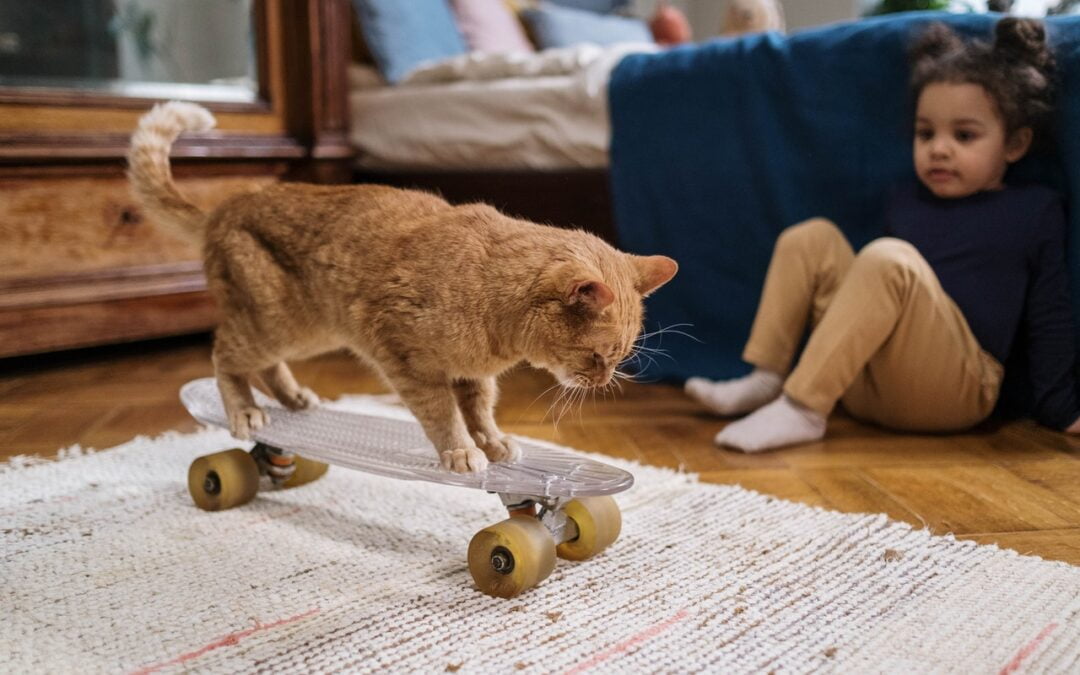
Why adopting a cat could be beneficial for an autistic child
Cats have a long history of improving people’s moods and brightening their days, which also appears to be true for children with autism, new research published in the Journal of Pediatric Nursing has revealed.
The small study suggests that adopting a shelter cat may help reduce separation anxiety and improve empathy in children with an autism spectrum disorder (ASD).
“Cats and pets in general, offer unconditional acceptance and someone to talk to and to be heard with. And caring for an animal can help them learn to be responsible, “said Gretchen Carlisle, study author and scientific researcher at the Research Center for Human-Animal Interaction at the University of Missouri in Columbia, United States.
ASD is a brain disorder that affects social skills, communication, and impulse control. In the United States alone, it affects one in 54 children, according to the Centers for Disease Control and Prevention (CDC) in that country.
The new work included 11 families who had children with autism between the ages of 6 and 14. The families were followed for 18 weeks after adopting a shelter cat. The researchers used standardized social skills and anxiety scales to choose the children who were likely to respond well to a pet. The cats were also evaluated for temperament.
In general, parents reported an instant bond between child and cat, and the bond remained strong over time, even with the added responsibility of caring for the pet.
The researchers found that the children’s separation anxiety, bullying, and hyperactivity decreased over the study period and they showed more empathy after adopting the cat. Most of the families kept the animal after the study ended.
Carlisle stressed that it’s not that cats are a better choice than dogs, but feline companions may be particularly suitable for some children with autism and their families.
“Many children with autism have sensory issues and when a dog barks in your face it can be really overwhelming, whereas cats just sit next to you and are less overwhelming from a sensory point of view,” he explained.
Cats can also be much easier to care for, especially for parents of children with autism who already carry a heavy load of responsibilities and stress, Carlisle said.
However, he added that the right combination is key.
“We specifically selected cats from 10 months to 4 years because there is previous documentation that younger cats are more sociable with children with autism, and adult temperament tends to establish at 10 months in these animals, so as young as 10 months old, cats already have the adult temperament,” Carlisle explained.
Several autism experts agree that adopting a pet can have benefits for children with autism and their families, always taking into account the information mentioned above. If you have a daughter or son with autism and you have more questions, consult a specialist in the field.


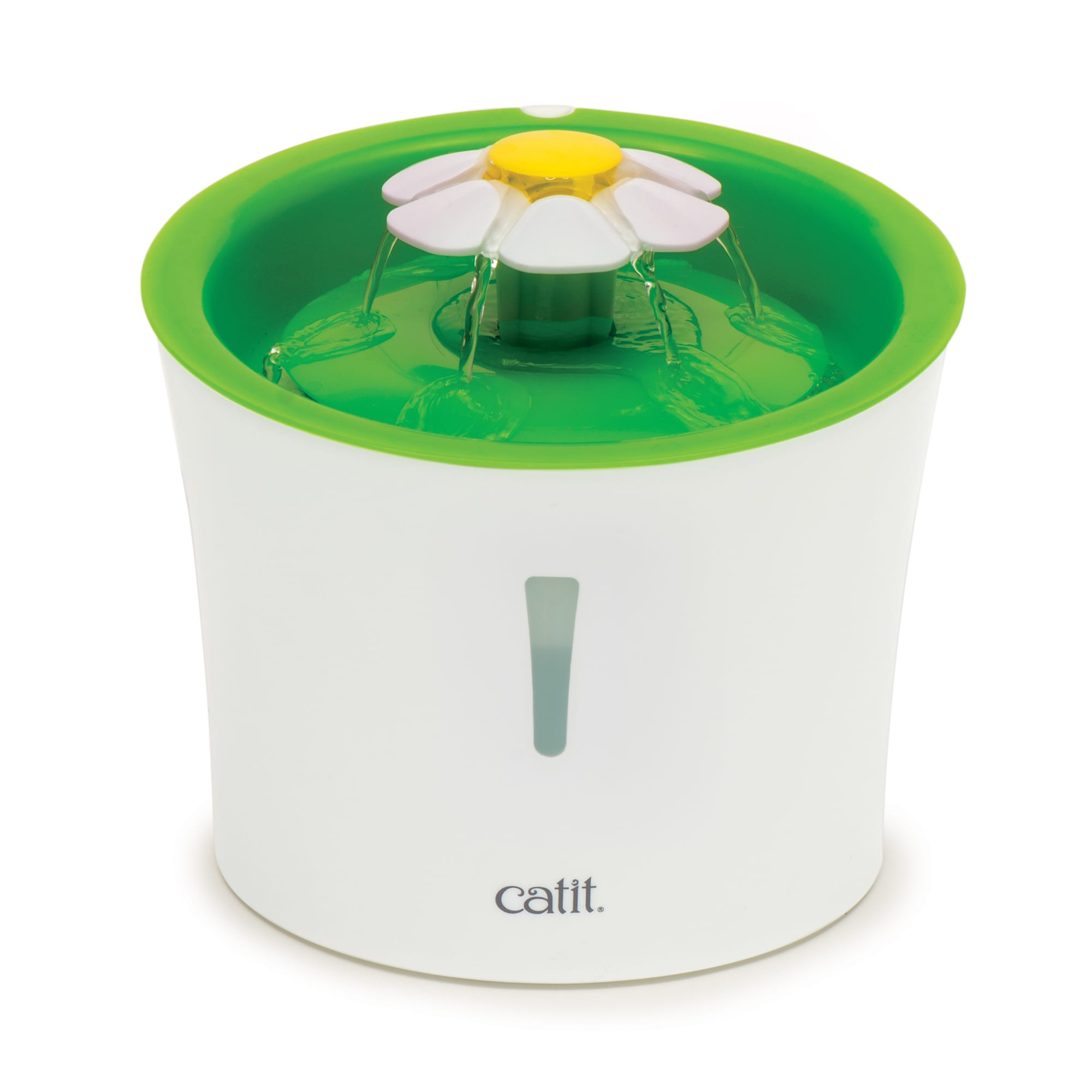
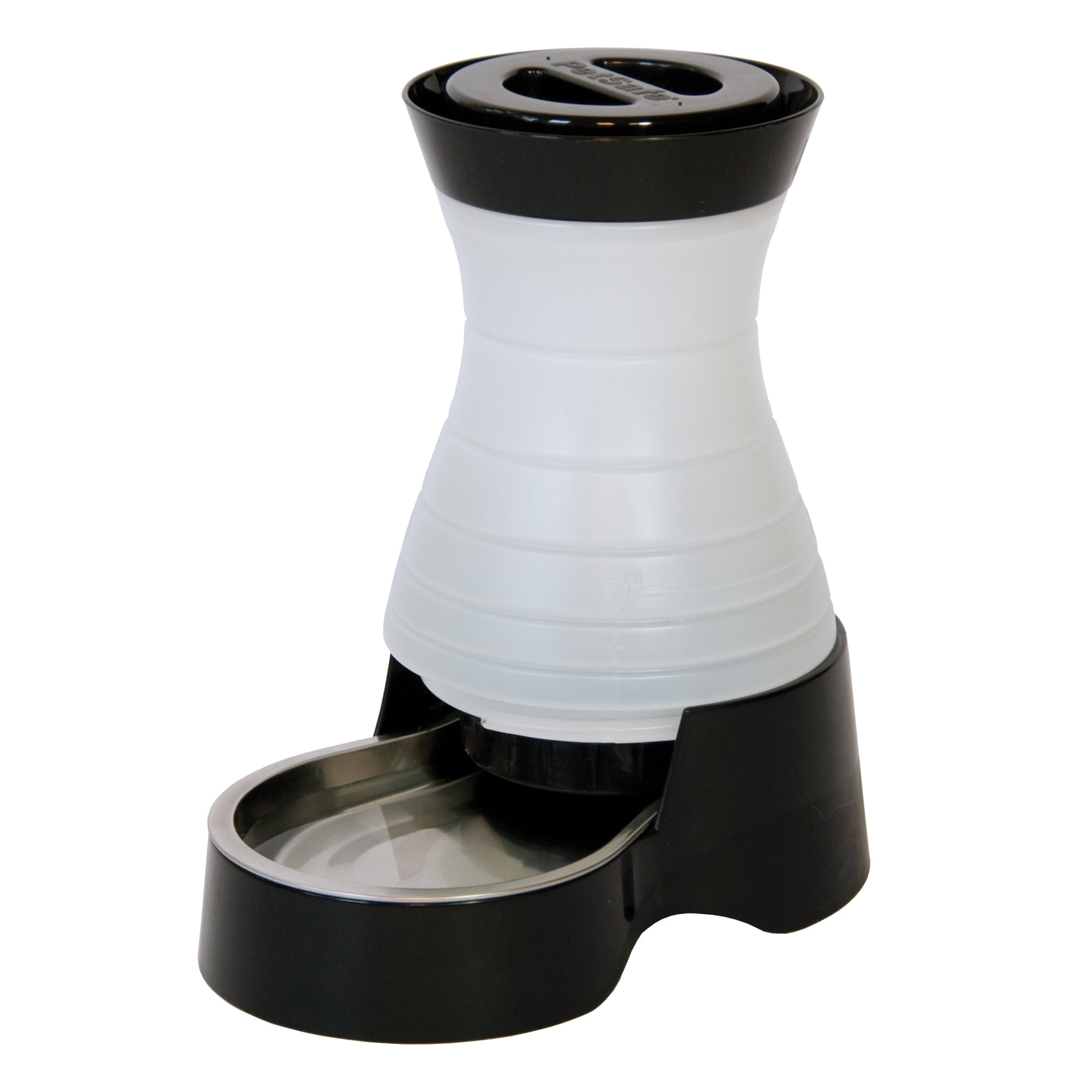
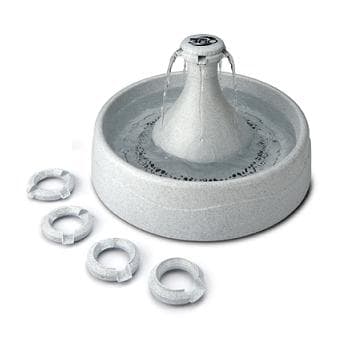

Recent Comments